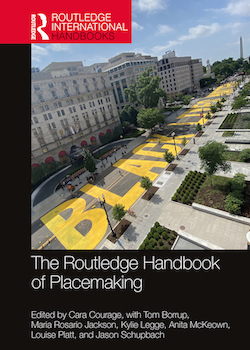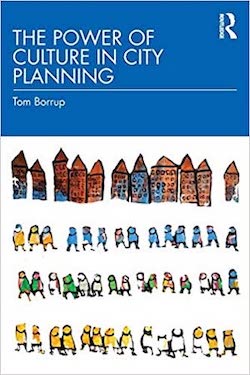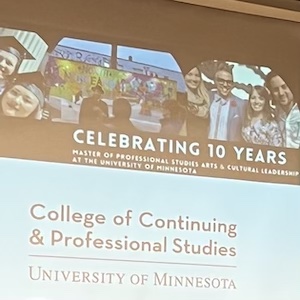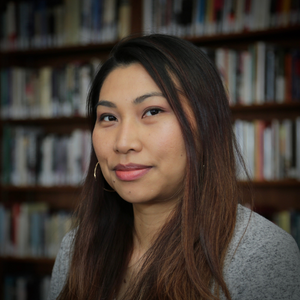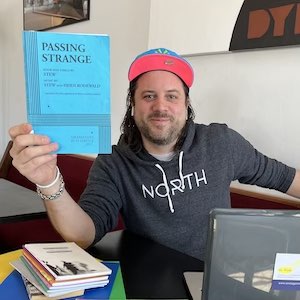An Interview with ACL Director of Graduate Studies Tom Borrup
Master of Professional Studies in Arts and Cultural Leadership (ACL) Director of Graduate Studies Tom Borrup recently edited a section in an upcoming book, The Routledge Handbook of Placemaking, and just published his own work entitled The Power of Culture in City Planning. He walked us through the sometimes complicated history and future of creative placemaking (which is explored in the program's Culture, Place, and Community Leadership specialization).
The Concept of Place Takes Center Stage
The section Borrup edited in The Routledge Handbook “ended up being focused on conflict,” he says. Conflict in placemaking, he explains, comes from the different ways of understanding and relating to the land and the spaces in which people live. It can refer to disagreements ranging from historic buildings to access to space and resources. And of course, it also relates to the Indigenous understanding of land, that it’s not something you own or control, it’s something you are part of and depend upon.
Chapters in the section cover human rights and placemaking, queer placemaking, disaster and resilience, rural/urban divides, and children in placemaking.
Borrup ended up writing the introduction to the section the weekend his Minneapolis neighborhood experienced fires and destruction after the murder of George Floyd.
George Floyd Square, at 38th Street and Chicago, “will have deep meaning for people far and wide for a long time. How it evolves is anybody’s guess, but the meaning will remain, and it will be symbolic and real. Whether that street will reopen is yet to be seen, but what’s important ultimately is how people get involved in shaping that space.”
To accomplish that goal, Borrup believes there has to be some buy-in from city government. They don’t necessarily have to initiate any action but they need to sanction it. It’s important that “they say yes, we will listen, we will accommodate, we will build on what community members want to see.”
Placemaking, Placetaking, or Placekeeping?
Creative placemaking is a term that is relatively new, Borrup says, although it describes a type of work that has been going on for decades, if not millennia. “It refers to people in a place working across differences and sectors to identify the assets and the strengths of a place, and to also identify the challenges or the things they would like to change.” It’s multifaceted: it’s physical, social, economic, political, and aesthetic.
"It’s important for people to see themselves in the design of spaces and buildings.”
To some, placemaking is not a comfortable term. Some hear “placetaking.” Gentrification has been a significant outcome in many areas. Still others call it “placekeeping,” but, as Borrup points out, restrictive deed covenants and redlining practices are also forms of placekeeping. The practice has evolved over the past 10 years, while conversations in the field about decolonization and language have grown.
How is creative placemaking different from cultural planning?
Cultural planning can essentially be creative placemaking or parts of an integrated process. In The Power of Culture, Borrup talks about the practice in the United States, where it started in the late 1970s.
“It was a way for the formal cultural sector—the nonprofit arts organizations, etc.—to self-organize and to advocate for their collective self-interest in terms of funding, public policy, and building relationships with other sectors or governments. In some other parts of the world it evolved more quickly, where it was much more about what the arts can do for the community and became more hand-in-hand with city planning.”
During the mid 1990s, that began to change in the United States, as cities of all sizes became more and more diverse. The arts sector came under attack for lacking meaning to new majority populations as well as for questioning power structures.
ACL Electives to Take If You’re Interested in Creative Placemaking
- Culture, Place, and Equitable Communities (taught by Borrup)
- Social and Cultural Geography
- Landscape Architectural History
- Urban Spatial and Social Dynamics
- Neighborhood Revitalization Strategies and Theories
- Designing, Planning, and Participation Processes
What is right and wrong with the way cities are planned today?
“Historically, the practice of city planning is a colonial model. It focuses on real estate not people. Cities are motivated to pump up real estate tax revenue because they depend on that for all the work they do.”
Therefore, the “highest and best use” of land (a mantra for planners) can mean generating the most real estate tax income. Parks and schools are in the equation, but some cities develop with little awareness of the human beings they’re planning it for. Planners fail to acknowledge that different people have different ways of using and understanding space, which includes practices around housing, recreation, transportation, and public spaces.
“Being the outside expert is a colonial tradition, too,” Borrup says—a position he also finds himself in. “The more (city planners) understand the people, the more complicated things can become, but the outcome will be better for more people. It’s important for people to see themselves in the design of spaces and buildings.”
Three Major Takeaways About the Arts in 2020
- Many organizations in the nonprofit arts sector have failed in advancing cultural equity, and in serving as the leaders, they should be promoting social justice more broadly. As ACL faculty member DeAnna Cummings, Arts Program Director for the McKnight Foundation, said at a recent conference, "incremental change is no longer enough".
- The COVID pandemic has revealed that only a handful of arts organizations were prepared to pivot abruptly to find ways to continue providing meaningful experiences for their audiences and members. Those tended to be the very smallest organizations and start-ups for whom entrepreneurial behaviors come naturally.
- Controversies over public art—mostly Civil War statues—have demonstrated the power of symbols in public spaces and daily lives, and thus the importance of cultural leaders who can navigate in the public sphere. We have to wonder why it took so long for this to come to wider attention and for people to take action (legal or not) to challenge these symbols.

